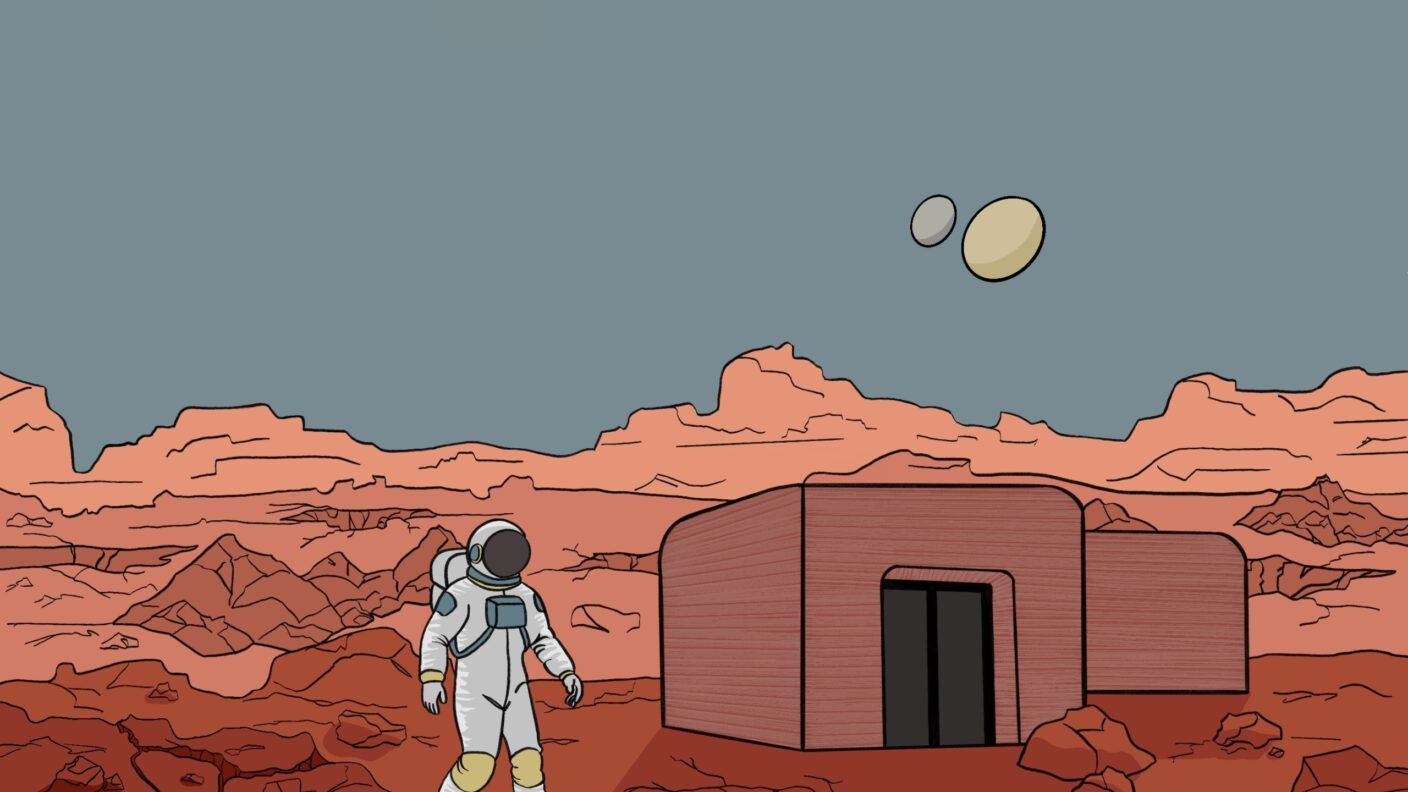2025-06-24 テキサスA&M大学

A synthetic habitat could be built with the help of a self-growing technology that harnesses local resources and microbes to autonomously form structures on the Red Planet. Credit: Kaitlyn Johnson/Texas A&M University College of Engineering
<関連情報>
- https://stories.tamu.edu/news/2025/06/24/growing-homes-on-mars-texas-am-research-pioneers-autonomous-construction-using-synthetic-lichens/
- https://asmedigitalcollection.asme.org/manufacturingscience/article-abstract/147/8/081008/1218408/Bio-Manufacturing-of-Engineered-Living-Materials?redirectedFrom=fulltext
火星建設のための人工生体材料のバイオ製造: 合成コミュニティのデザイン Bio-Manufacturing of Engineered Living Materials for Martian Construction: Design of the Synthetic Community
Nisha Rokaya,Erin C. Carr,Richard A. Wilson,Congrui Jin
Journal of Manufacturing Science and Engineering Published:June 23, 2025
DOI:https://doi.org/10.1115/1.4068792
Abstract
As the next step in extraterrestrial exploration, many engineers and scientists revealed their intense interest in enabling multiplanetary human life, including colonizing Mars. This study demonstrates that architecture on Mars can be realized by designing a synthetic community, including diazotrophic cyanobacteria and filamentous fungi, which produce large amounts of biomaterials to bond Martian regolith particles into a consolidated body. Through 3D printing, a wide range of structures can be fabricated, such as buildings, houses, tables, and chairs. Within the synthetic community, diazotrophic cyanobacteria will (1) fix carbon dioxide and dinitrogen from the atmosphere and convert them into oxygen and organic nutrients to help the survival and growth of filamentous fungi and (2) increase the concentration of carbonate ions by photosynthetic activities. Filamentous fungi will (1) bind metal ions onto fungal cell walls and serve as nucleation sites for biomineral production and (2) enhance the growth of cyanobacteria by providing them with water, minerals, and carbon dioxide. In this study, such coculture systems have been created and displayed robust growth solely based on Martian regolith simulants, air, light, and an inorganic liquid medium without any additional carbon or nitrogen sources. The cyanobacterial and fungal growth in such coculture systems is much more robust than their axenic growth due to mutual interactions. The amounts and morphologies of the precipitated crystals vary remarkably depending on the cultivation condition.



